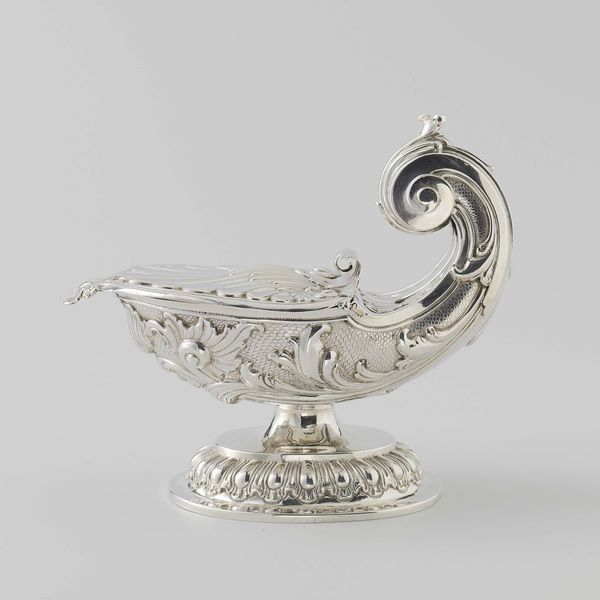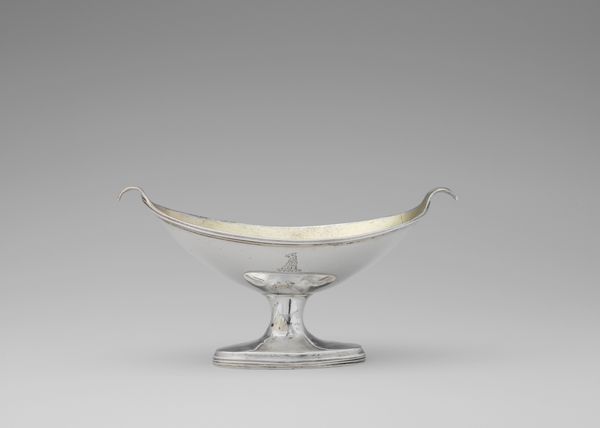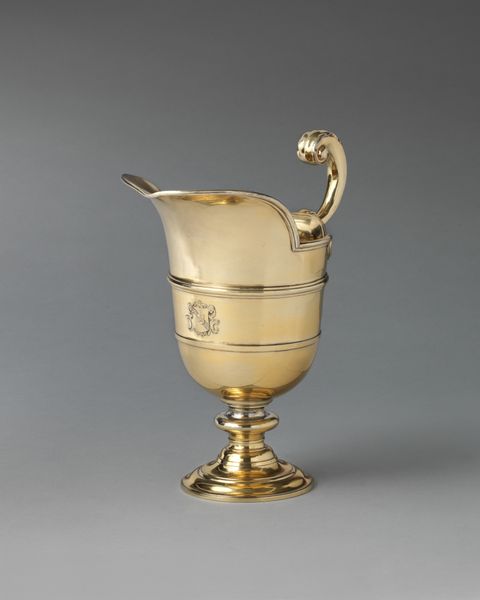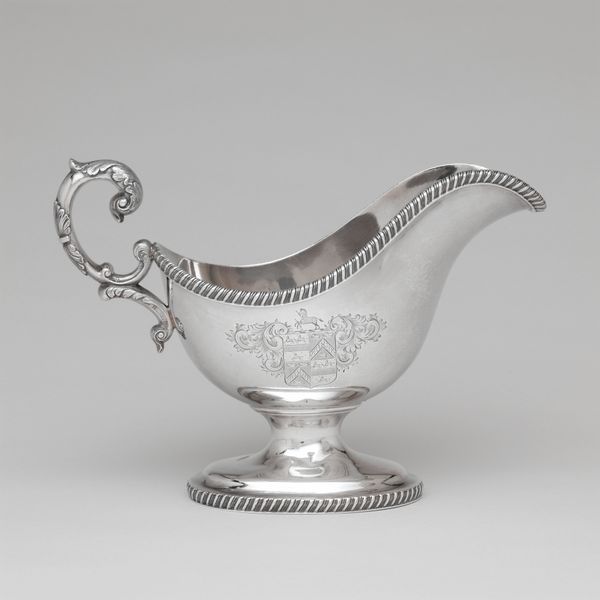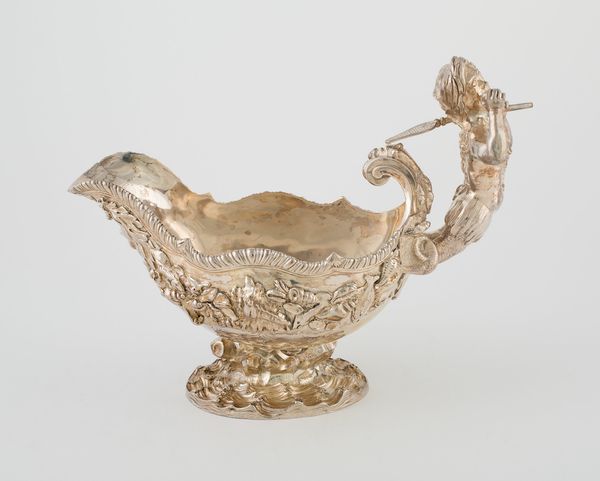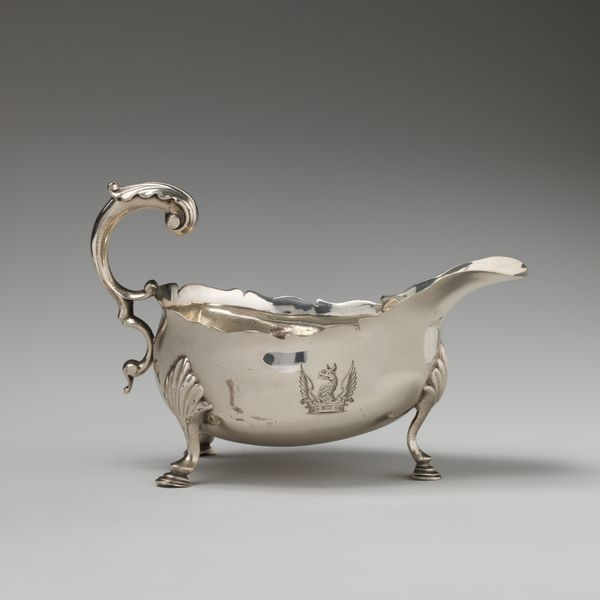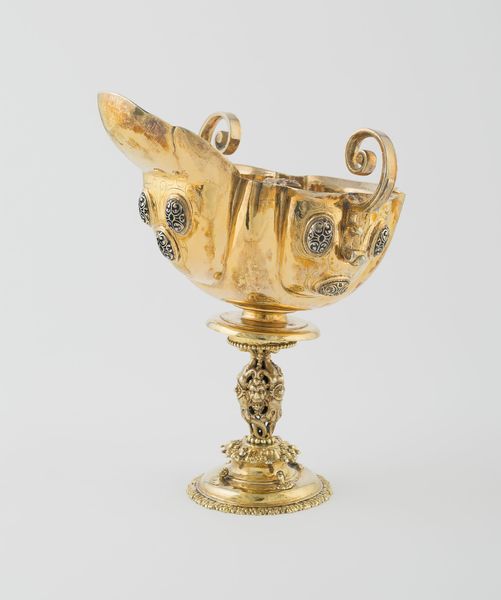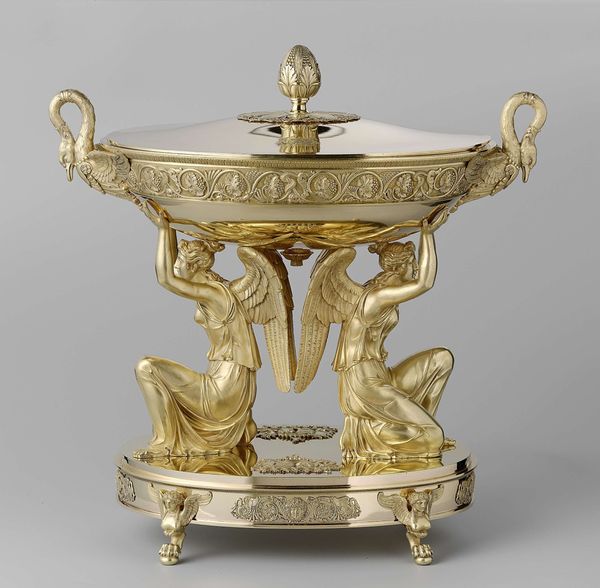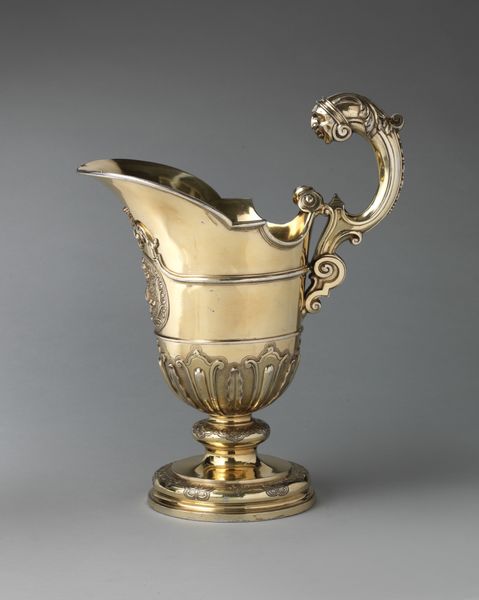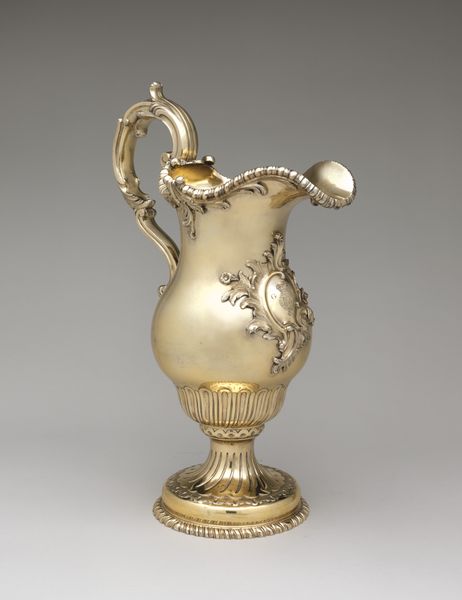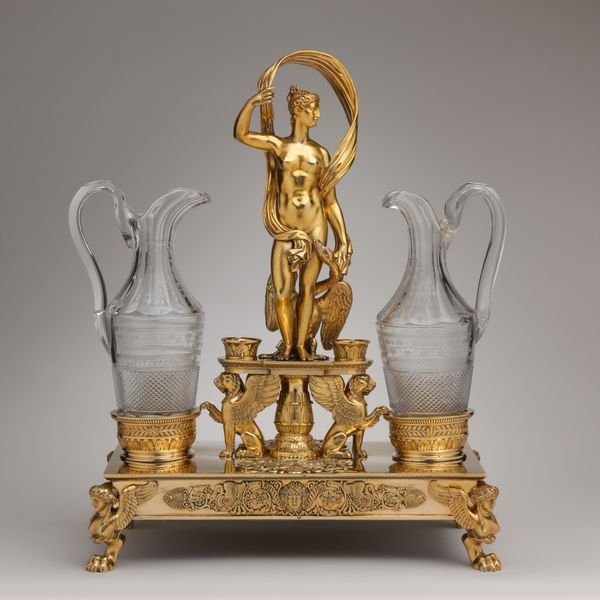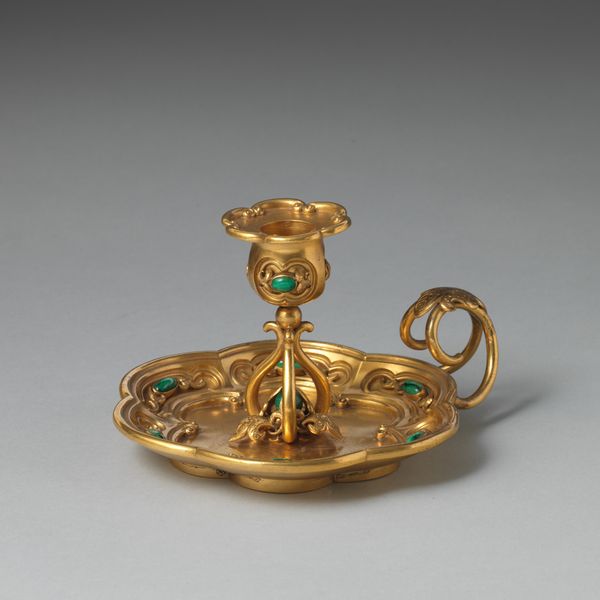
Cloches (dish covers), coolers, soup tureens, sauceboats, salt cellars, pepper and mustard pots c. 1819
0:00
0:00
Dimensions: height 34.3 cm, width 29.6 cm, depth 16.2 cm, weight 3530 gr
Copyright: Rijks Museum: Open Domain
Jean-Baptiste-Claude Odiot crafted this silver sauceboat with its stand sometime in the late 18th or early 19th century, during a period of immense social and political upheaval in France. The sauceboat, with its extravagant ornamentation and classical motifs, speaks volumes about the opulence and elitism of pre-revolutionary France, where the aristocracy reveled in displays of wealth and privilege. Consider the cherubic figure adorning the handle. What does it mean to literally grasp privilege? The winged sphinxes supporting the base further evoke a sense of exoticism and power, reminiscent of an era when the French elite asserted their dominance on the world stage through colonialism and trade. But the shine of the silver also reflects the harsh realities of inequality and discontent that ultimately fueled the French Revolution. Odiot's sauceboat serves as a poignant reminder of a society on the brink of transformation.
Comments
rijksmuseum about 2 years ago
⋮
A confidante of the Russian empress commissioned this 140-piece service, several items of which are displayed here. Silversmith Odiot, the painter Prud’hon and the architect Cavelier proudly presented the new models at the 1819 French national exhibition of decorative art. Notable are the kneeling angels supporting the soup tureen, which are characteristic of the late Empire style.
Join the conversation
Join millions of artists and users on Artera today and experience the ultimate creative platform.
